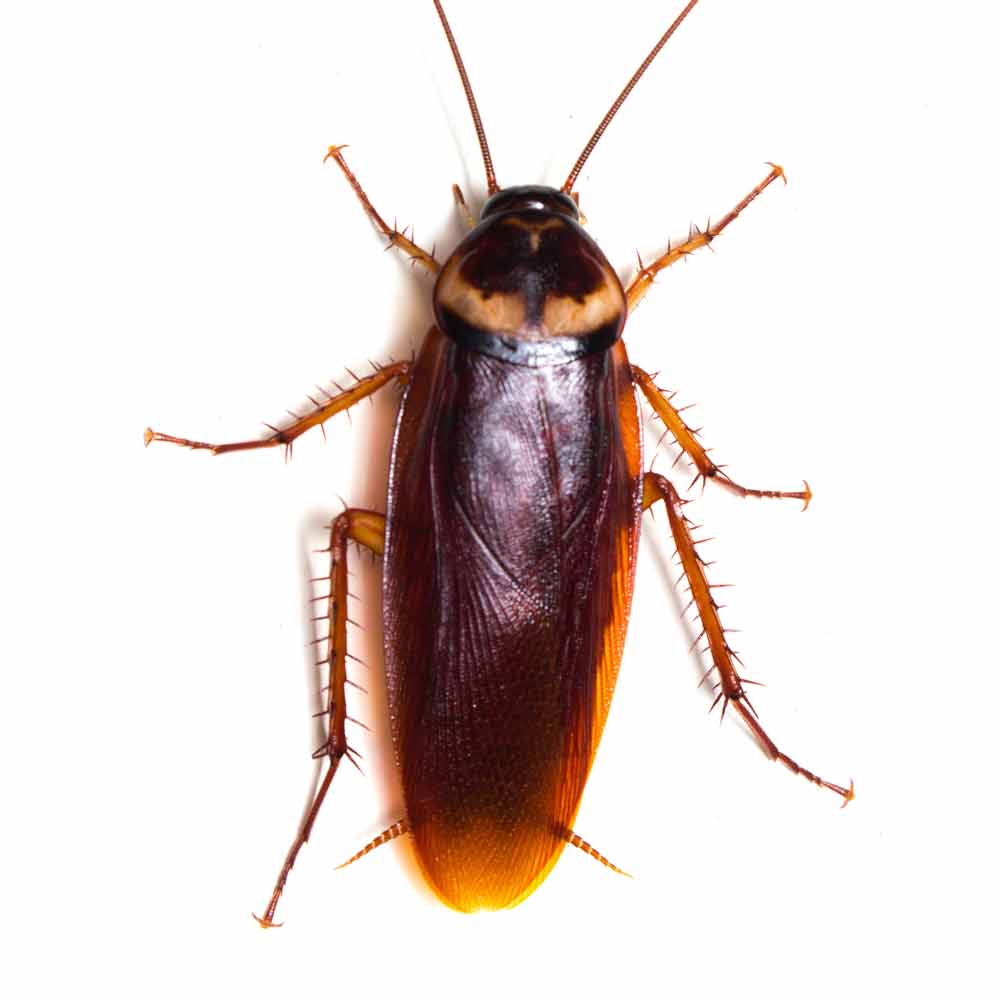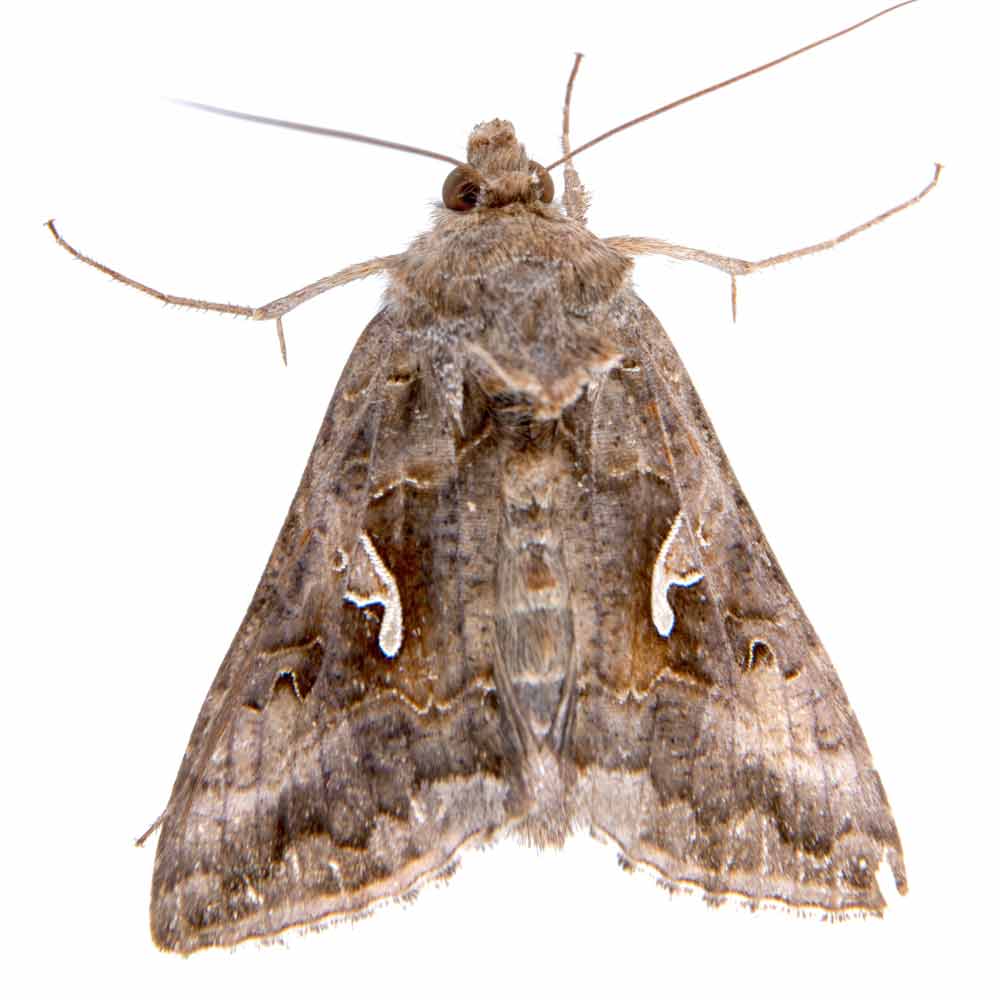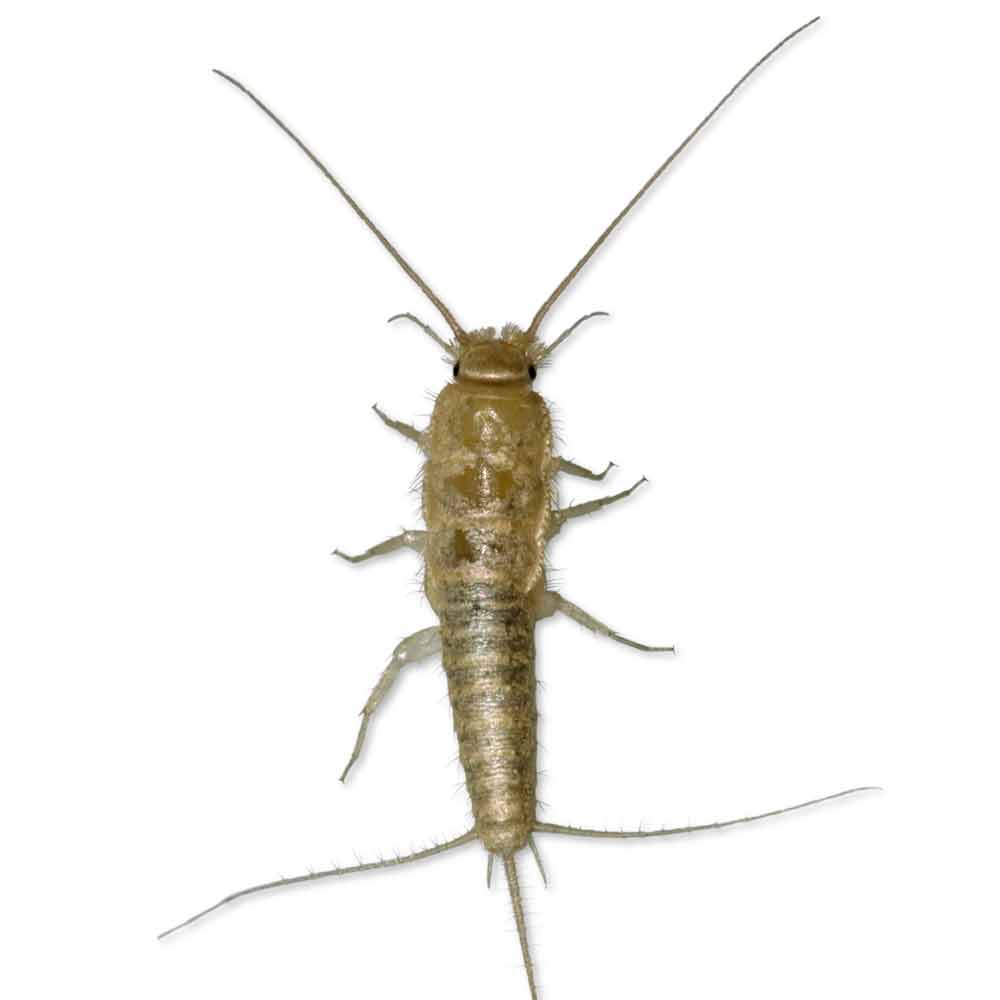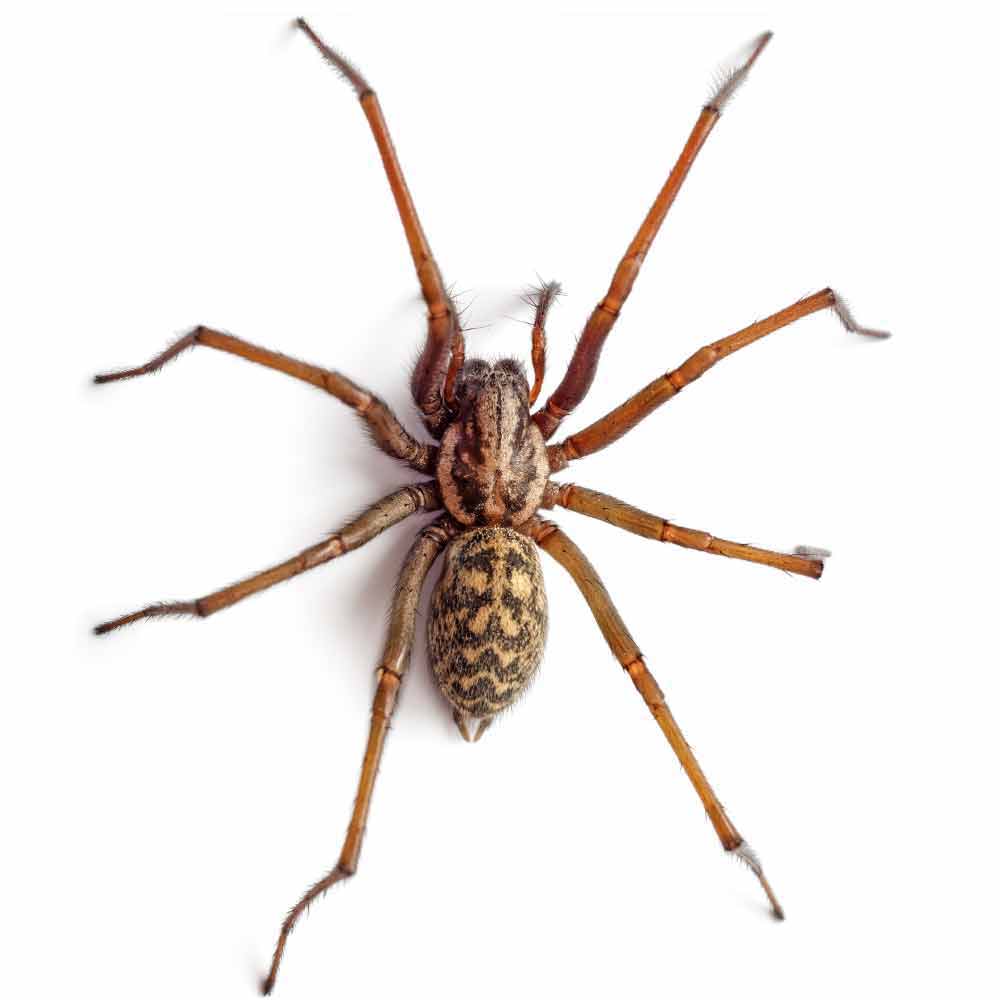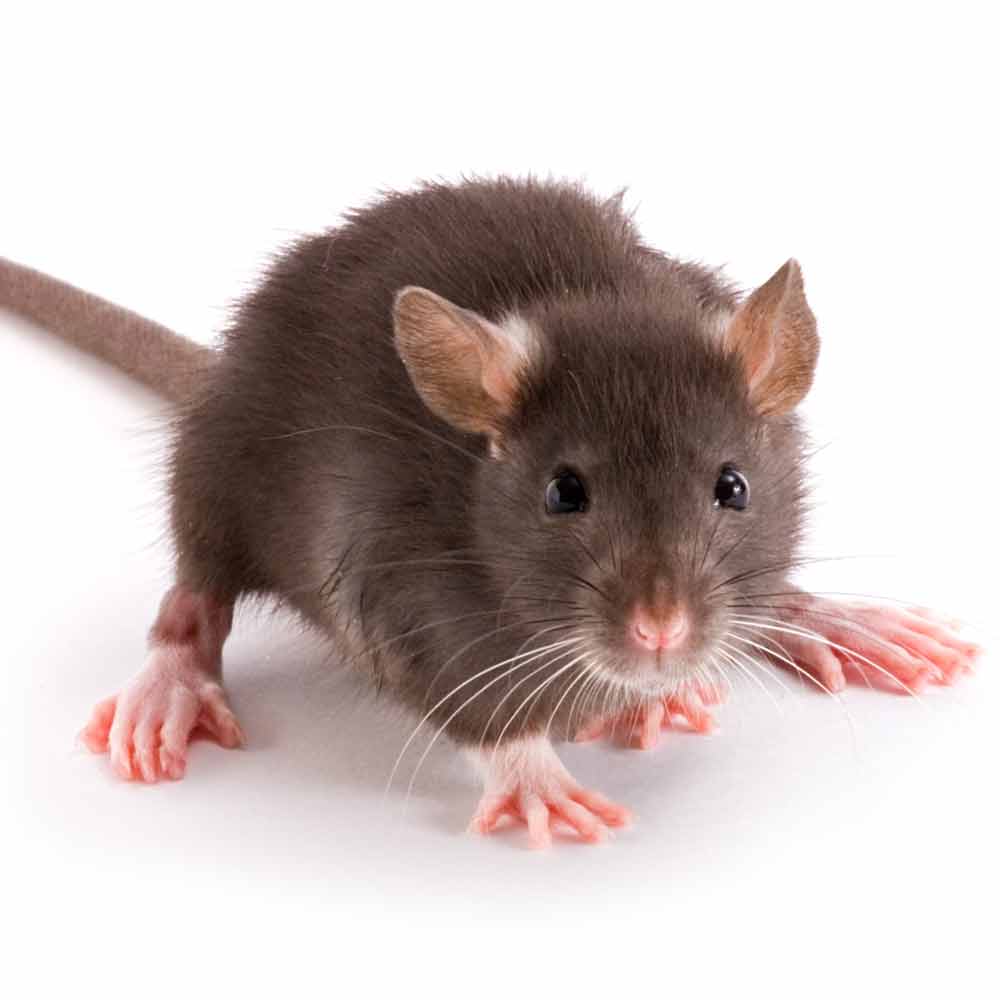Pest ID
Let us help identify the pests you’re seeing. Check out our bug gallery below.
Identify pests in your home
Below you will find useful information about the kinds of pests that exist in this part of the country. Click an image to enlarge it. Once enlarged, click anywhere outside of the image to close it.
German Cockroach
- Adults are 1/2-inch long.
- Tan with two dark strips running lengthwise on the area behind the head.
- The most common species encountered in structures.
- Often occur in large numbers.
American Roach
- Largest of the common cockroaches; about 1-1/2 inches long.
- Reddish brown with the margins of the thorax lighter.
- May live out of doors in warmer areas.
- Prefer moist, dark areas.
- Have fully developed wings and can glide long distances.
Smokey Brown Cockroach
- Adults are 1-1/4 inches long.
- Uniformly dark brown in color.
- May live outdoors in warmer months and move indoors when cool.
- May be found throughout the structure.
- Fully developed wings; strong flyer.
- Large egg case.
- Attracted to light.
Brown Band Roach
- Adults are 1/2-inch long.
- Brown with two lighter bands across the base of the wings and abdomen.
- May be found throughout the structure.
- Glues egg case to objects such as furniture.
Oriental Roach
- Adults are 1 inch long.
- Very dark brown to black in color.
- Adult female has only wing pads.
- Adult male has wings that cover 3/4 of the abdomen.
- Found in damp places such as basements and sewer lines.
Ants
- Ants are social insects (they live in a colony).
- May sting.
- Most ants will feed on a wide variety of foods.
- Ants have three types or castes in a colony: workers, males and females.
- Workers in the colony may be different sizes.
- Ants have a complete
metamorphosis.
Fire Ants
- Produce large mounds in open areas.
- Fire ants bite only to get a grip and then sting
- Often attack small animals and can kill them.
- The sting site typically swells into a bump within hours, which can cause further pain and irritation.
- 30–60% of the people living ininfested areas of the US are stung each year.
Carpenter Ants
- Carpenter ants do not eat wood but chew it out to nest in it.
- Are the largest ants found in Georgia.
- Prefer to nest in wood that is slightly decayed.
- Leave small wood shavings outside the nest area.
Fleas
- Adults are 1/8 to 1/6-inch long.
- Adults a dark brown, flattened side to side and have no wings.
- Adults feed on warm blooded animals.
- Larvae feed on organic debris.
- Eggs are laid on the host after feeding.
- Can carry diseases such as plague and tapeworm.
Ticks
- Ticks are flattened from top to bottom.
- Adult ticks have eight legs.
- Larvae have six legs.
- They are not insects.
- All stages feed on blood.
- Can carry diseases such as Lyme disease and Rocky Mountain Spotted Fever.
Stored Product Pests
- Include insects such as rice weevil, saw-toothed grain beetle, confused and red flour beetle, the drugstore beetle, cigarette beetle and the Indian meal moth.
- May feed on whole, damaged, or milled products.
- Generally have low moisture requirements.
- Can spread throughout the kitchen.
- May spread throughout the house on dried flower arrangements and potpourri.
- Usually very small in size.
Fabric Pests
- Include insects such as clothes moths and carpet beetles.
- Damage is caused by the larvae.
- Feed only on animal fibers: wool, silk, fur and feathers.
- Do not feed on cotton.
Mosquitoes
- Includes all varieties.
- Carry many diseases including West Nile Virus.
- Have complete metamorphosis.
- Lay eggs in standing water – anywhere.
- Prefer shade during day.
Flies
- Includes the housefly, cluster fly, drain fly, blowfly and mosquitoes.
- Carry many diseases.
- Have complete metamorphosis.
- The larvae are called maggots.
- Adults have only two wings.
Silverfish
- Grey to brown in color.
- Adults are 1/2-inch in length.
- Have three long projections at the end of the body.
- Feed on almost anything containing proteins or sugars.
Spiders
- Spiders are not insects.
- Spiders have 8 legs.
- Only the black widow and the brown recluse are dangerous.
- Most are beneficial because they feed on insects.
Norway Rat
- Large, robust in appearance weighing up to 18 ounces.
- Has small eyes, small ears and a blunt snout.
- Usually nests in the ground.
- Will eat anything but prefers meats.
- Has 4 to 7 litters per year with 8 to 12 young per litter.
- Shy around new objects.
Roof Rat
- Sleek appearance weighing up to 9 ounces.
- Has large eyes, large ears and a pointed snout.
- Usually nests in vines, walls and attics.
- Will eat anything but prefers fruits and vegetables.
- Has 4 to 6 litters per year with 4 to 8 young per litter.
- Shy around new objects.
Our Primary Service Area
We have a record for exceptional service. In fact, a good percentage of our business comes from referrals of satisfied customers. If you have lived in the South for long, you know you need a pest control company that gets results and cares about their customers.
We have happy customers all throughout Gainesville GA, Oakwood Georgia, Dawsonville, and surrounding cities for Hall County and our reputation as a first-class pest control company is growing every day.
If you live outside the cities mentioned above, no worries! Give us a call. We'd love to take care of all your pest control needs.
Get In Touch
Always Wise Pest Solutions
Gainesville, Ga 30504
678-294-3143
info@alwayswisepest.com



